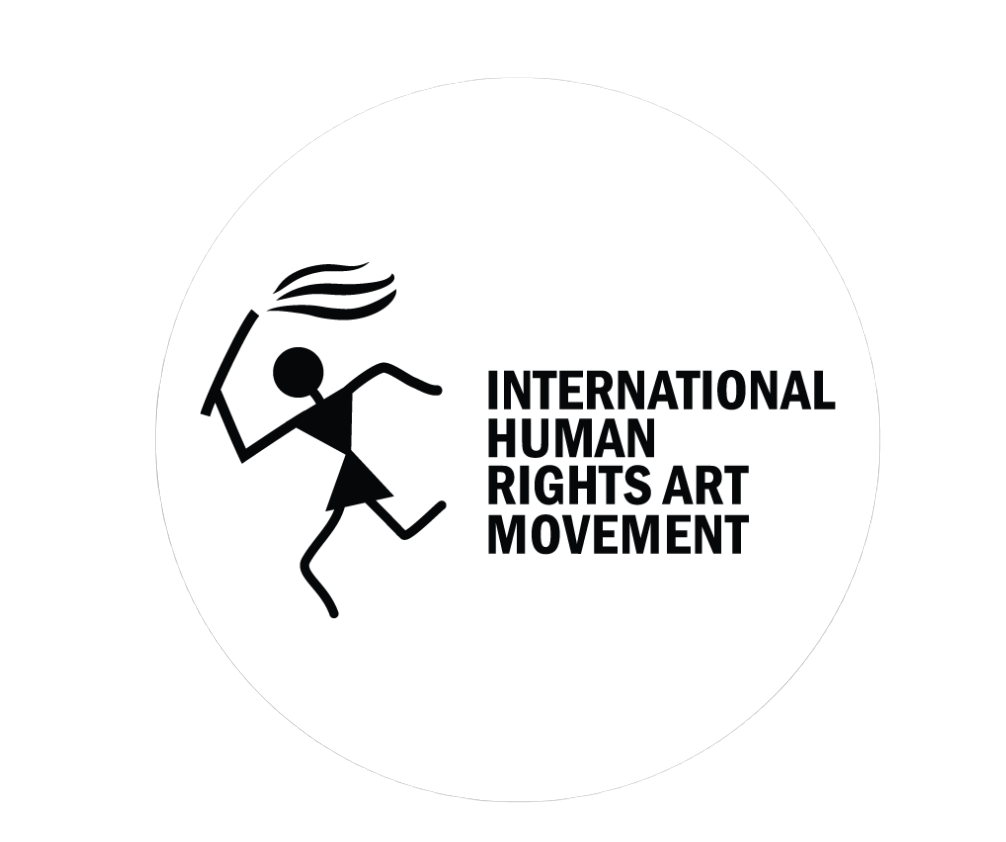Inside the Writer’s Mind: Claire Joysmith
Claire Joysmith, one of the IHRAM’s treasured writers, shares her musings, inspiration, and drive as an author and activist. Thank you for all you do, Claire.
What moves you? What compels you to pick up a pen or open your laptop to free write?
My creative urge most often finds its spark of energy in the title, the first line of the poem, or in a single, poignant word or image. It “arrives at my doorstep,” and I’d better be prepared to welcome it immediately, or it will turn into a wisp of smoke. I have found myself reaching for my cellphone on a whim to record or jot down some lines in my notes app or in the notebook I often carry with me.
These moments creativity know no schedule in my world, so I respond as they emerge. It can be inconvenient while driving or standing in the grocery queue, or even during a conversation with a friend, for instance; but I’m always grateful for its sudden presence and acknowledge it with due respect.
It often announces itself when I am able to give it protected time and space. I’m careful not to interfere with its own momentum so that it may have the necessary freedom to shape itself. I do not consider this freewriting; it has its own life and much freewriting has preceded it. It is more like allowing the poem to find its aliveness as it emerges. There is a part of “me” that must step back to allow for the unraveling to take place, and there is another part of “me” that needs to step up, vigilant. It is a curious and delicate balance between the flowing and the shaping, between what sensations, emotions and language can negotiate at a given moment and for this specific poem. It is different every time, which is why stepping back to allow the moving forward is crucial for the unraveling to happen.
I figure that having taught literature and creative writing for years, having read and read, my own voice and its urgency will find a way through the kaleidoscopic mayhem, debris and colorful displays stored within what I call “me”, whether private or public. It is an ever-changing process all the time. There is no set way. At least that is how my creative writing processes come into play. True, I do sit down to write pretty much on a daily basis, but I don’t have a fixed time or a set routine. It is more of an oops, here it comes, excuse me for a bit, or else a nudge to sit down and go for it…now!
Needless to say, I value spontaneity and sincerity as much as the gift of sifting myself through, even as I’m immersed in the shaping. I’m overly conscious, however, of the need to share and therefore re-write, revise, and revise again, for I value, too, the potential reader’s time and energy invested in reading what is being offered up for sharing. After all, this is about communicating what is often a challenge to communicate through words, an emotional core within a shaped entity that the reader will engage with, feel out, consider and, hopefully, find a worthy takeaway, since it now belongs to the reader’s realm of experience, has ceased to belong to the poem itself or to who wrote it, transcribed from myriad inner/outer , personal/public kaleidoscopic movements/shiftings.
I place a high value on poetry that is, yes, spontaneous, but has been carefully honed to enhance and refine its core spontaneity. Mary Oliver said she kept pencils stashed in tree nooks, handy for writing on the spot during her walks, yet also admitted she revised her poems some fifty times before their publication.
The hardest part of writing is the more tepid objectivity of revisiting an entity that has taken on a life of its own and may kick up a fuss when tampered with. And that is where one of the secrets lie to better poems: the finely crafted silversmithing with care, patience and lots of love and intuitive wisdom.
What human rights concerns are you most moved by? What inspires and influences your writing, particularly when it comes to addressing human rights issues?
One of my main interests lies in what is (in)visibilized in my particular situatedness, that is to say, where I live geographically and where it is I feel from, where I write and engage from; and this happens to be Mexico. This, however, in no way cancels my potential to relate to other issues elsewhere in the world. But I do find myself wanting to share more widely what occurs here and will resonate beyond these borders.
I wrote “Y qué hacer?” published by IHRAM bearing a Spanish-language title to address feminicide in Mexico, a huge and increasingly disturbing issue that is at times more, at times less, visible in many other countries. Its existence is undeniable, however, and the lack of government and legal mechanisms to address it as it deserves are still very poor. Having said that, I find that the role women, especially young women, are playing in society in relation to this issue, is actually creating changes here, but there is a very long way to go.
What drew you to become a contributing author for the IHRAM magazine, and how do you personally connect with its mission?
I was drawn by the sincerity and direct openness, the force of some of the at times raw topics of the writers I read in the IHRAM online magazine. It seemed to me, right from my first reading, vibrant and committed.
I personally felt the impulse to contribute when I realized that a poem I had written was suited to what I understood the magazine was focusing on: x-raying and coloring human rights issues, rendering them through a personal lens that would meet with an empathetic and aesthetically-geared response. I had actually written an earlier version in Spanish, that I had not yet translated into English, something I often do, or vice-versa, from English into Spanish. It was fascinating to observe what the poem itself asked me to do while “transcribing” it into a different culturally-informed language and syntax. Rather than a translation, a new poem was born.
I found it fascinating that, when I sent it into IHRAM, there was openness in being inclusive by allowing certain words to remain in Spanish, untranslated; another wonderful surprise was the suggestion to use the chorus of sorts as the title: “Y qué hacer?” (again, untranslated), a definite improvement on the original English-language title. Especially since the question —a thematic axis— involves readers in any language and in all countries, by raising the direct question as to what can/will I/we do regarding the violence of feminicide.
This is a deep concern not only in Mexico or Spanish-speaking countries, but world-wide, as violence against women specifically is in itself a systematized language, as it were, which we are all familiar with, and one that is not addressed sufficiently or effectively.
Another main focus here is a foil to violence: compassion. For the victim, yes, but also for the perpetrator, product of a society that consumes and reproduces violence, and for the victim’s family, so often neglected in the entire equation. Seen through that lens, a single act of violation/violence multiplies suffering for many. The victim loses her voice; family and friends can speak up for her. Yet it is surely the role of the poet/writer to voice the feeling part of events and elicit a response from the reader that does not replicate hatred. That is to say, compassion towards all involved, a deeper compassion that can become a motor for agency of change.
The values of IHRAM include beauty as a fundamental creative principle, sincerity, vulnerability, celebrating diversity, and opening doorways of engagement. How do these values resonate with your writing, and how do you incorporate them into your creative process?
As I mentioned before, the creative principle is dictated by several factors in my writing, and has to do with my personal experience, but also a continuous self-search as to where I am in my own process as a writer and a person, as a social being and a spiritually engaged human being.
All are important but manifest at different times and in different ways. I find sincerity up there in my list of priorities, but that does not mean it is compatible with certain issues that are not mine to broach. I have to be very careful between what I can actually delve into, how I do it, and what is within my realm of reality and life experience to engage in.
Poetry comes easier when it comes to a gushing aliveness, but when it comes down to the bones, I write what talks to me and through me. It even arrives in different languages, such as English or Spanish. I have no control over that, really. Rather, I let it take the bridle and see where it leads. It is me, but not me, as I mentioned above. Every poem is in itself an adventure, an unfolding mystery. This does not mean I do not have very specific and clear perspectives of what I feel a NEED to address.
Read and enjoy all of Claire’s previously published work:
Silencio de azules (2016)
Écfrasis (2019)
Bacalar: esbozos de agua y tinta (2021)
Ink and Water: Sketches of Bacalar (trans. Don Cellini) (2022)
Tejedoras de luz / Weavers of Light (2024) (forthcoming in English and Maya).
Her work appears in the International Human Rights Art Movement’ literary magazine, Literal (Mexico-US), Ekphrastic Review (US), Adanna Literary Journal (Great Britain), Diálogo (US), Con la A (Spain), Siinden (Turkey), Crisol (Colombia), Blue Heron Review (US), Calameo (Mexico-US), Monociclo (Mexico),), Beat Style Poetry (US), among several others.
Explore her work at clairejoysmith.blogspot.com
Silencio de azules ebook on Amazon
Recent publication (Spanish) centered on women in Yucatan

